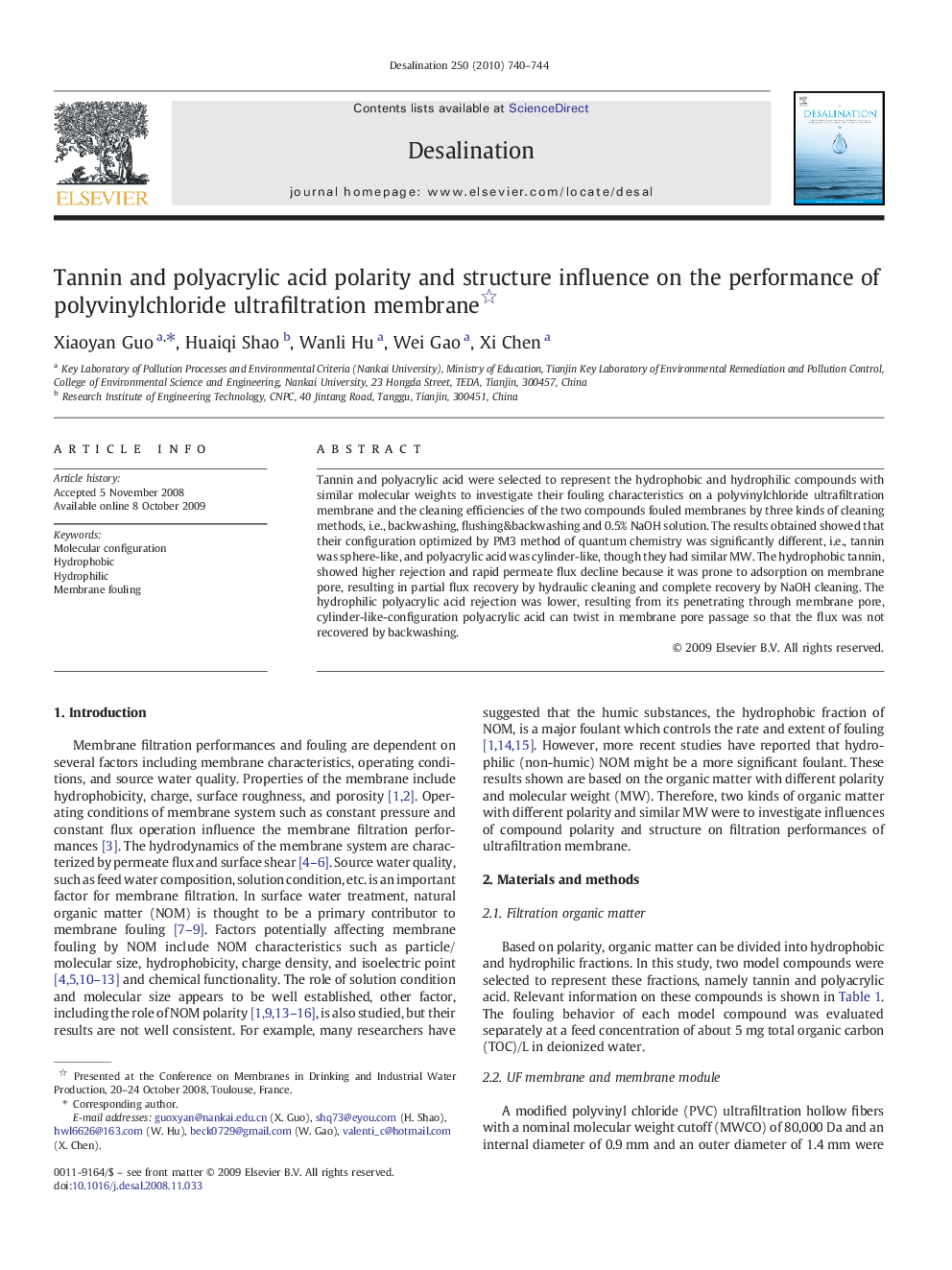| Article ID | Journal | Published Year | Pages | File Type |
|---|---|---|---|---|
| 626082 | Desalination | 2010 | 5 Pages |
Tannin and polyacrylic acid were selected to represent the hydrophobic and hydrophilic compounds with similar molecular weights to investigate their fouling characteristics on a polyvinylchloride ultrafiltration membrane and the cleaning efficiencies of the two compounds fouled membranes by three kinds of cleaning methods, i.e., backwashing, flushing&backwashing and 0.5% NaOH solution. The results obtained showed that their configuration optimized by PM3 method of quantum chemistry was significantly different, i.e., tannin was sphere-like, and polyacrylic acid was cylinder-like, though they had similar MW. The hydrophobic tannin, showed higher rejection and rapid permeate flux decline because it was prone to adsorption on membrane pore, resulting in partial flux recovery by hydraulic cleaning and complete recovery by NaOH cleaning. The hydrophilic polyacrylic acid rejection was lower, resulting from its penetrating through membrane pore, cylinder-like-configuration polyacrylic acid can twist in membrane pore passage so that the flux was not recovered by backwashing.
